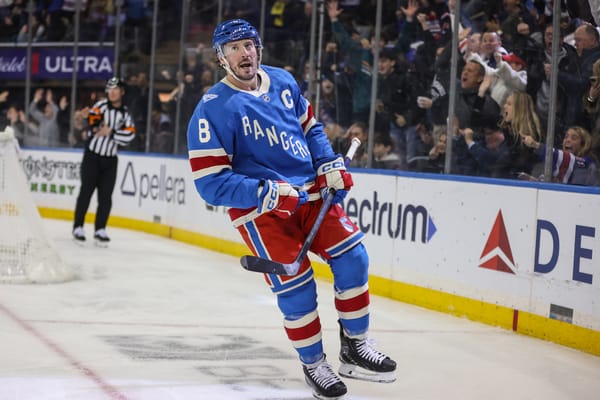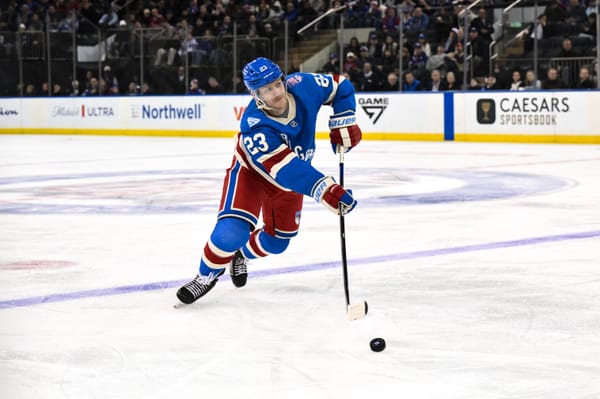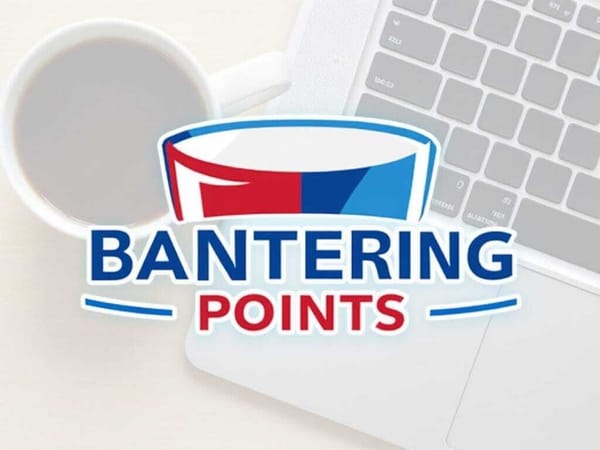The Rangers Have Decisions To Make At Center
In a week full of expected decisions, two major surprises occurred for fans of the New York Rangers:
- The inclusion of J.T. Miller in the Trade Deadline selloff.
- The returns of Ryan Spooner and Vladislav Namestnikov in the deals Jeff Gorton made leading up to 3 p.m. on Monday.
For a team that announced they were starting over, you probably wouldn’t expect guys like Spooner and Namestnikov (ages 26 and 25 respectively) to be brought into the fold. In fact, I even went so far as to wonder if Spooner was acquired simply to be used as more selloff material to bring back future assets:
Add Spooner here, too. I wouldn't be shocked to see teams who didn't get Nash/Grabner/Brassard and who don't want to pay for Kane going after him. https://t.co/WecaY92AFQ
— Joe Fortunato (@JoeFortunatoBSB) February 25, 2018
Since then (as of this writing), Spooner has a ridiculous five assists in his first two games on Broadway and Namestnikov had a goal and an assist in his debut. The two couldn’t have had better starts to their Rangers’ tenure — but it also sparks the question: what should Gorton do with them after this season?
Based on their ages, they’re not old enough to be close to ageing out of their prime, but not young enough to be considered kids. On the podcast this week, I spoke about how these days there’s this conception that anyone over the age of 26 is trending downward, even though that’s not really true. Players like Mats Zuccarello and Rick Nash have been some of the Rangers’ best players despite being in their early-to-mid 30’s. It’s not about the age of the player, so much as it is the role and the money.
Gorton, very smartly, realized that in Spooner, Miller, and Kevin Hayes; the Rangers had three similar players, all playing the same position, and all putting up similar production. Hayes’ value was diminished thanks to the reasons I outlined here, and Miller was valued highly by the league.
Since then, Larry Brooks reported the Rangers weren’t enamored with Miller’s off ice work ethic, and the team thought he had issues with coaching that didn’t stem from Alain Vigneault.
3. The Rangers had become convinced J.T. Miller’s coachability issues were not linked to Vigneault and they were concerned he had regressed in his work habits and off-ice preparation, according to individuals familiar with the inner dynamic.
Knowing all of this, it puts a hell of a lot more color on the picture than we had previously. Elliotte Friedman said the Rangers’ deal with Tampa was a “two-week-long grind,” and that leads me to believe the Rangers knew they were moving on from Miller (or trying to) in this particular deal. That they got back Namestnikov feels like a coup — the same way prying Spooner for Nash does.
Which brings us back to the new faces. There is something to be said for being concerned about the future production of both players. However, these concerns are drastically reduced with Namestnikov — who has some of the most elite underlying possession numbers in the league. Despite him playing with a fantastic support group in Tampa, the previously linked story actually shows that the Lightning are worse off when he’s not on the ice despite those elite linemates. Adam went into some details about the pitfalls for expecting a slew of offense from him:
Namestnikov, at his current pace, extrapolates to 26 goals and 58 points over a full season. Should the Rangers count on getting that kind of production from him going forward? No. He won’t be playing with Stamkos and Kucherov in New York. However, his shooting percentage last season, when he scored just 10, was unsustainably low. Namestnikov will do a decent job of producing on the scoresheet, and he is the kind of center you can deploy in tough assignments.
Depending on who the Rangers have next year, and where he plays, I do see Namestnikov capable of being a 50-point player. If Nash returns or Ilya Kovalchuk signs as a free agent, and he’s playing with decent talent, I think he can be in that range. If the Rangers continue to burn things to the ground, well, that’s a different story.
Spooner is more interesting case. This year he has 32 points in 43 games, and his 82-game projection would be an 19-42-61 split. Last year Spooner had 39 points in 78 games, and the year before that he had 49 in 80. I think it’s safe to say Spooner is a 40-point guy, but the jump from expecting 40 points or 55+ is a big one. Is the support system he got in Boston a big part of why he’s had so much success in the NHL? He does have 149 points in 257 NHL games (a 0.58 PPG average), so there is some historical evidence that he’s capable of doing this longer term.
As always, the first issue is the money. “But Joe,” you cry, “the Rangers are flush with cap space!”
They are, but giving term to players who don’t deserve it is a big reason why we’re here in the first place. The Rangers, despite their current liberation from the salary cap ceiling, can’t just spend money long term like it’s nothing. You want to give Kovalchuk $10-million for next year? Fine, whatever, because the Rangers won’t be competitive next year. But when you look down the road you need to make smarter decisions to avoid all this.
According to Matt Cane’s free agency model, a four-year deal for Namestnikov would carry a $4.99-million cap hit, while a five-year deal would be in the $5.1-million range. For Spooner, a three-year deal would cost $2.8-million, a four-year deal would come in at $4.28-million, and a five-year deal would be $4.20-million (if you’re curious why the numbers jump so rapidly at seemingly arbitrary year marks — in Spooner’s case year two to year three — it’s because that’s when the signing team is beginning to sign a player through their UFA years).
Could the Rangers land Namestnikov for a five-year deal worth $4.75-million? What about Spooner for four-years $4.25-million? Those are more conservative figures, but let’s run with them for a minute.
Now what about Kevin Hayes? According to the Cane’s model, Hayes will cost between $4.5-$4.8-million for a four-or five-year deal. Let’s play the conservative game again and say the Rangers lock him up for five years at $4.5-million.
This is the next, and maybe bigger problem:
That would leave the Rangers with long-term deals for Mika Zibanejad, Spooner, Hayes, and Namestnikov — all of which are centers. You could move Spooner to the wing, as the Rangers have, but that still locks up your three top center positions for the foreseeable future — an issue Adam mentioned in his mailbag.
Do the Rangers really want to commit $15 million long-term to three centers; none of whom pass as an unequivocal first-line center? That is particularly undesirable given that it would block Filip Chytil and Lias Andersson. Yes, one or both could play the wing, but they are both most valuable at center. It would be a poor idea to force them onto the wing during the most important years of their development.
Is it possible the Rangers move another of the above to the wing? You’re not hurting Hayes’ or Namestnikov’s development by putting them there, but you might be hurting their overall production.
One would have to assume Gorton and company are monitoring all the restricted free agents very closely for the rest of the year, specifically the new faces. Do the Rangers move on from one of them at the draft to get more assets and make space for the future? It feels like that could be possible, especially if Spooner’s total production for the year inches toward 60 points (82-game rated since he’s missed time with injuries).
Then again, if the Rangers are moving on from guys like Mats Zuccarello at the deadline, the forward group might be depleted enough that they need to keep everyone around. As much as you might want to get behind the tank again in 2019, you have to have some people around that can teach the youth the ropes.
As things stand now, I don’t think both Namestnikov and Spooner can be part of the long term plans. If one or both would be willing to take two-year deals, the Rangers can extend this decision until they know more. And they might just try to do that.
I personally see Namestnikov as a more beneficial long term options. The defensive side of the play is there, his underlying numbers are awesome, and I do expect a nice jolt of offense out of him.
Regardless, Gorton has decisions to make at center — and they’re critical.
The work is just getting started.





